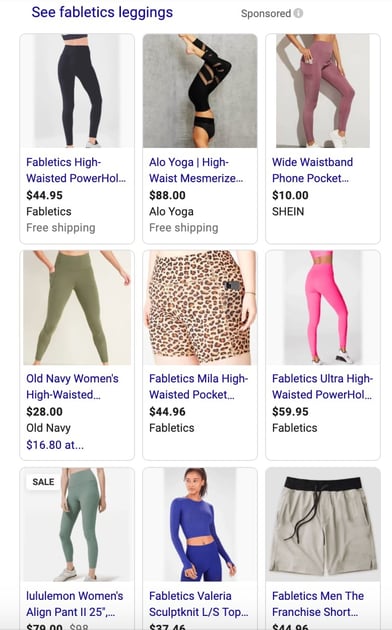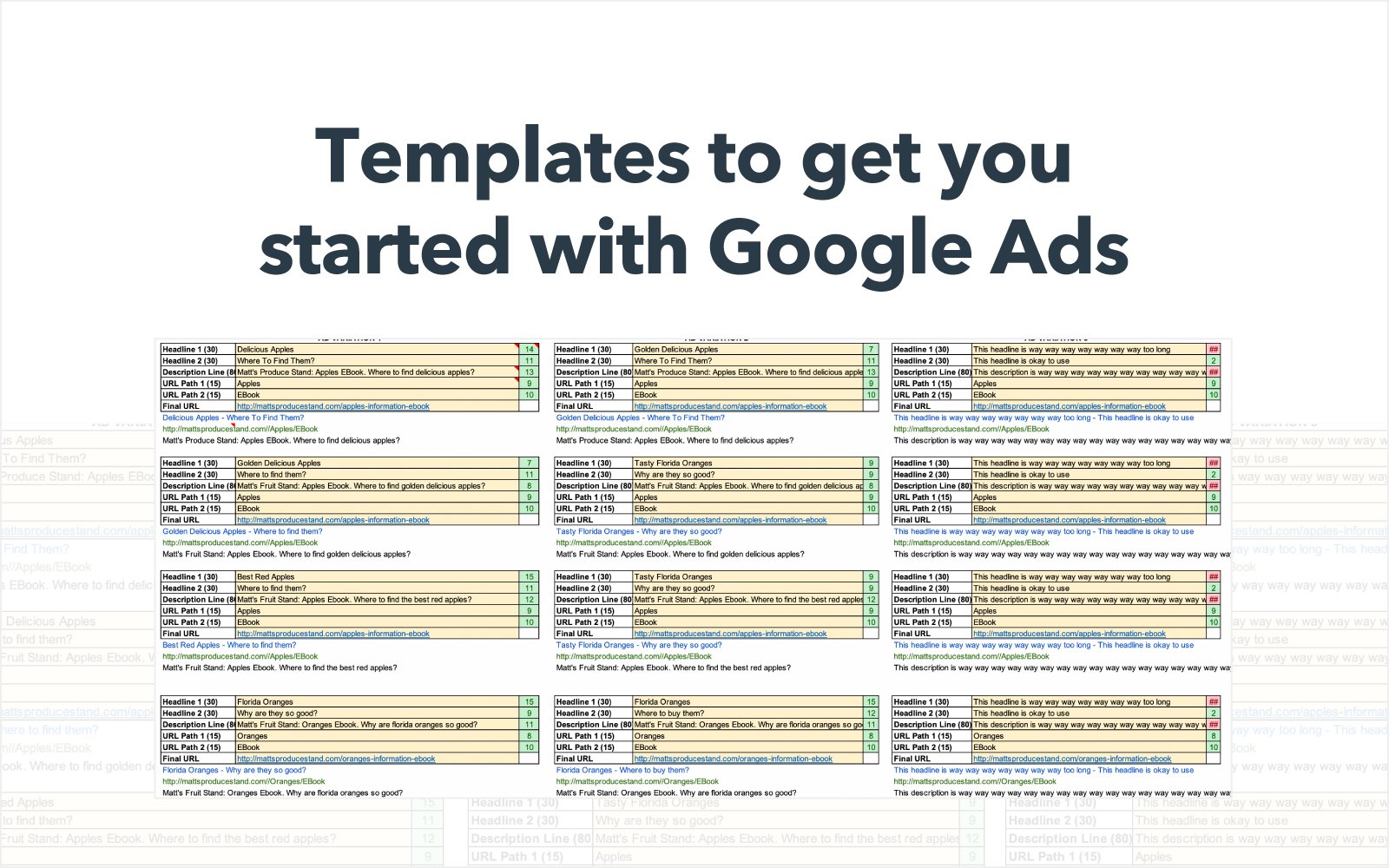I love online shopping. In fact, online shopping is almost the only way I shop.
And I’m not alone.
In 2019, there were 263 million digital buyers in the U.S. By 2024, this figure is projected to increase to 282.7 million online buyers.
As a marketer, these figures prove that businesses should invest in Google shopping ads.
Google shopping ads, the ads that appear on the search engine results page when someone is searching for a product, can be confusing to set up.
In this post, we’ll review how to structure your Google shopping campaign and the top strategies that’ll drive sales.
Google Shopping Campaign Structure
There are two approaches you can use to set up your Google shopping campaign structure. You can use one campaign and one ad group, or you can set up multiple campaigns with varying ad groups and campaign priorities. Your Google shopping ads will be made up of campaigns, ad groups, and product groups.
If you want to set up Google shopping ads, you might be wondering, “Which campaign structure should I use?” and “What’s the difference?”
Below, let’s discuss the two different methodologies behind a Google shopping campaign structure.
Featured Resource: Google Ads Planning Template
While setting up Google Shopping Ads campaigns sounds complex, using a planning template can make it easier.
HubSpot’s Google Ads PPC kit will help you determine what your bids should be, set up and optimize your budget, find new keywords, and optimize your campaigns.
1. One campaign and one ad group.
The simplest way to set up your Google shopping campaign is to use just one campaign and one ad group.
When you first set up a Shopping campaign, you’ll have one ad group with one product group called “All products,” which will include your entire inventory.
This is a great approach if you want to run a straightforward campaign, without using complex optimization techniques.
However, if you want to customize your bid based on which products you’re selling, then this approach isn’t for you.
2. Several campaigns with varying campaign priorities.
Instead of running one campaign with one ad group, you can run multiple campaigns and prioritize them based on your bidding strategy.
For example, you can set up a campaign targeting unbranded keywords by using a negative keyword list that includes your brand’s name.
You might choose to have this campaign be a low or medium priority since the searchers who aren’t using branded keywords are in the beginning stages of their research.
On the other hand, you can set up a second campaign targeting branded keywords and setting a high priority because these users are further in their buying journey and more likely to convert.
By using several ad groups, optimized with negative keywords, you’ll have more control over the search terms that your product shows up for.
However, it’s important to note that you can’t choose which keywords your product shows up for. You can optimize your campaigns with negative keywords and customized bids, but you can’t choose the keywords you want to target.
Additionally, you can also set up different campaigns for different product groups. Again, you can decide which campaign is a high priority and which one is a low priority depending on which products you think will convert more.
Although this method gives you more control, it requires more strategizing and organization in the planning phase.
Plus, what works for one company, might not work for another. This means that you’ll want to test and see what works for you.
Once you have a good idea of the campaign structure you’re going to use, it’s time to strategize. Below, let’s dive into the top Google shopping ad strategies that’ll help you develop a campaign that drives sales.
Google Shopping Ads Strategies
- Create customized campaigns using negative keywords.
- Consider your pricing.
- A/B test your campaigns.
- Optimize your product pages.
- Split your ad groups by product.
- Use retargeting methods.
- Build a Similar Audiences list.
- Include a special offer or deal.
1. Create customized campaigns using negative keywords.
When you create multiple campaigns, you can divide them into high, medium, and low priority.
One strategy is to use several campaigns with varying priorities to target certain searches. To do this, you’ll need to develop a negative keyword list for each campaign so you can control which searches your product shows up for.
This might mean that you develop a campaign for more generic searches versus high intent, branded searches.
With this strategy, you’re going to want to think about which searches are more likely to convert versus those that aren’t.
2. Consider your pricing.
With Google shopping ads, your ad is going to be competing with several other products. That’s why it’s important to consider your pricing.
In the example below, you can see the Google shopping ads that showed up for the search “Fabletics leggings.”

While most of the products are Fabletics, there are a few from other brands. You can see Fabletics leggings priced around $45-60, however, you can also see Old Navy leggings for $28 and SHEIN leggings for $10.
Price can play a large role in the purchasing decision, so it’s important to keep your prices competitive to increase your sales.
3. A/B test your campaigns.
When you’re devising any new strategy for a marketing campaign, it’s important to A/B test. With Google shopping ads, you’ll probably try a few different techniques.
You might want to test different ad groups, priority settings, bids, or negative keywords.
Additionally, you can also test which product groups and product pages are more likely to convert.
With Google shopping ads, it’s important to find the right balance between your campaign structure and bidding strategy.
To improve your sales, you should run A/B tests to see what works for your company and what doesn’t.
4. Optimize your product pages.
Not to be redundant, but keep in mind that your Google shopping ads won’t target specific keywords.
This makes it even more important to optimize your product pages so you can signal to Google which keywords your product should show up for.
To do this, you should use keywords in your product title, page title, meta description, image alt text, and product description copy.
This will help Google decide when to show your product.
5. Split your ad groups by product.
One strategy you can use when you set up your Google shopping campaign is split your ad groups by product.
For example, perhaps you want to group certain products together. Let’s say you sell scrunchies and wine, like Kaitlyn Bristowe. However, you probably don’t want to target the same keywords because the products are so different.
Additionally, you might want to focus more of your money on the scrunchie ads than the wine because they usually drive more sales for your brand.
By splitting your ad groups by products, you can set different priorities and budgets for your campaigns.
6. Use retargeting methods.
Have you ever been looking at a product online and then scrolled through Facebook only to see an ad for that exact product?
That’s retargeting in action.
You can use retargeting for your Google shopping campaigns.
To do this, you’ll use remarketing lists that give you the ability to segment your site visitors by previous site engagement.
You can also customize your bids based on previous engagement such as shopping cart-abandoners, loyal customers, or repeat visitors.
With this strategy, you can increase your sales because people are more likely to convert if they’ve visited your site before.
7. Build a Similar Audiences list.
A similar audience is a way to segment your traffic to cater specifically to audiences who are similar to your returning customers.
This means that they have similar behavior online and might be more inclined to purchase your product.
With Google shopping campaigns, you can set up Similar Audiences to build connected, engaged, and loyal customers.
8. Include a special offer or deal.
Similar to considering your price, one strategy for your Google shopping ads is to include a special offer or deal with your products.
Additionally, you can consider adding a free shipping tag to your ad.
Adding a special offer is free to include in your ad, can help set you apart from other ads, and improve your ROI.
While Google shopping campaigns seem like a complex, intimidating process, it’s really not. All you have to do is think strategically about your campaigns and test what works for your company.


